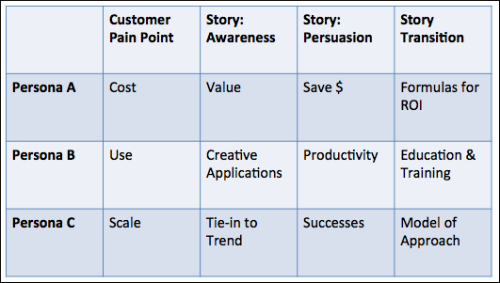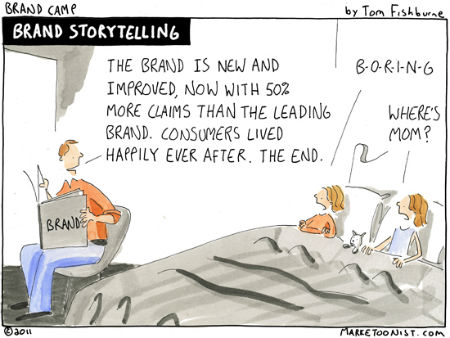
I attended University a very long time ago, where I started out pursuing Graphic Design and then transitioned to an interdepartmental degree: Sociology, Industrial Psychology and Business. Art was interesting, but I was only mildly talented and there was no digital program (this was pre-internet). As I look at the state of the social web today, I am amazed at what a dynamic and interesting time we live in. I wonder what it would be like, studying social psychology and organizational development now, with the ubiquity of the social web and transformation of internet access from PCs to mobile devices.
One area of interest to me is the impact of persuasion and behaviors. Not just individual behaviors, but that of groups. Since I’m in the business of marketing, it’s an interesting intersection between my past studies and what many companies are in need of today in terms of understanding social technology adoption, social communications, knowledge transfer, community and collaboration.
While many people consider me a “SEO guy” or that in combination with PR, Social and Content, I am and always have been a marketer. My job has always been to connect customers with companies for mutual benefit. Whether that involves optimizing content for discovery through search, social influence or awareness through industry media isn’t as important as knowing the difference between the vehicle and the outcome. And the “why”.
Marketers can get tactically proficient and even scientific about SEO signals, social technologies or information distribution platforms, but in the end it’s an understanding of those customers and what influences them that helps most with the process of persuasion. A lot of channel-specific marketers focus on how communication platforms work vs. how customers understand those platforms or even why they use them.
I’d like to point out that while I am a strong advocate of customer-centric marketing and how that manifests as persona development, it doesn’t mean I think customers should dictate all marketing. There are many, many scenarios where customers don’t know any better, don’t know what they want, or where the perception of need can be created through compelling story. Those situations call for an understanding of customers and then creative efforts to “tell them what they want” for lack of a better phrase. Whether we’re reacting to customers, anticipating their needs or leading them – an understanding of what persuades differente customer groups is essential.
Besides asking what keywords are most relevant and which social platforms customers are using, shouldn’t we wonder why a certain customer uses search in the first place? Why do they use social? What influences them to use both and in what situations? What kinds of content are most persuasive and in what contexts?
The follow-up to those types of questions is, “How can brands better understand the influences that motivate customers to act?” and “What content and signals of credibility do we need to create?”
Let’s say you have an objective of persuading a group of potential customers to change their behavior. It may be a scenario where there are commonly held, yet outdated beliefs and your brand is the solution. It might be as fundamental as a new product that solves an existing problem in a different way.
One of the first steps is to profile those potential customers in terms of preferences and behaviors.
- What do they currently believe to be true?
- What are their objections to doing what you’ll be persuading them to do?
- What are their primary influences?
- What motivates their behaviors?
- What outcomes are most attractive to them?
- What would limit implementation, use and acceptance of your persuasion objective?
Profiling the target audience in this way in combination with translating the information into a content plan can then be transformed into a holistic approach involving a mix of Paid, Owned, Earned and Shared media. One aspect of such a campaign would involve storytelling through content. You know, “Facts Tell, Stories Sell”.
Finding stories that represent examples of customer archetypes that have made the transition from previous behaviors to the desired behaviors and outcomes is a great starting point. This logic is pretty common in advertising where a storyline of, “I used to think this, then I found out that, and that’s why I use/buy from company 123.” is presented.
Those stories that are tailored specifically for the personas for each major segment of the target audience can provide the information and inspiration needed to make fundamental changes in their awareness, perception, acceptance and transition to the desired outcome.

The narrative for each storyline should empathize with the current situation and provide reasonable and practical steps for overcoming objections as well as clear steps for making changes. Motivations for change can vary by persona, so it’s important to identify a structure that allows for such variances. The success stories have to be real of course and not appear so different that outcomes are not attainable.
The format for content in such a situation can run the gamut of text, digital, video, audio, images, events, email and so on – according to what is known about the target customer group. Whenever there’s content, there’s a need for “Optimize and Socialize” to facilitate attraction, engagement and sharing. Additional considerations include how content will move customers through attraction to conclusion.
- Discovery
- Engagement
- Comprehension
- Internalization
- Enhancement
- Engagement
- Conclusion
- Sharing
As stories are told, it’s important to find and promote early successes as well as create a process for engaging with prospects, conversion, implementation and identifying success. Success stories can be small, tactical examples or more strategic and comprehensive. The role of search in such a scenario is to optimize for discovery but also to analyze search data, interactions and conversions for continued efforts at message refinement. Of course, this has been made somewhat more difficult by Google’s decision to encrypt logged-in search referring keywords. The same attention to social analytics would also apply. In the end, those success stories can become the spokespeople for future growth, engagement and conversion.
Maybe what I’m suggesting in this post doesn’t seem so different from what content marketers are already doing. What I do know is that there’s a lot of opportunity to bring in customer insight and brand storytelling into optimization and social media marketing communications. I think digging into a lot of the “why” customers are motivated and influenced as well as the “why” they use search and social technologies will help online marketers better understand how to use content and persuasive storytelling to attract, engage and inspire customers to buy.



